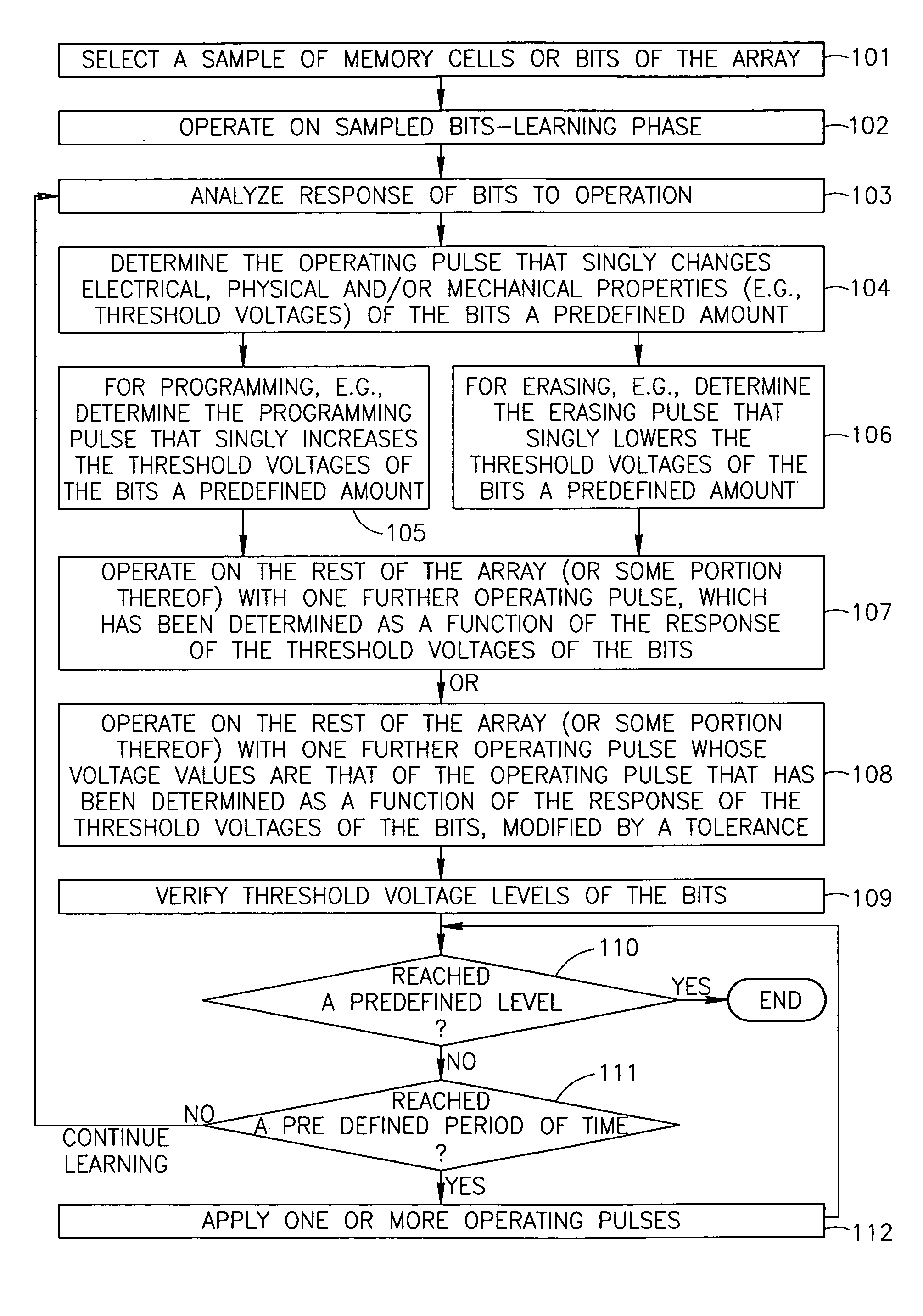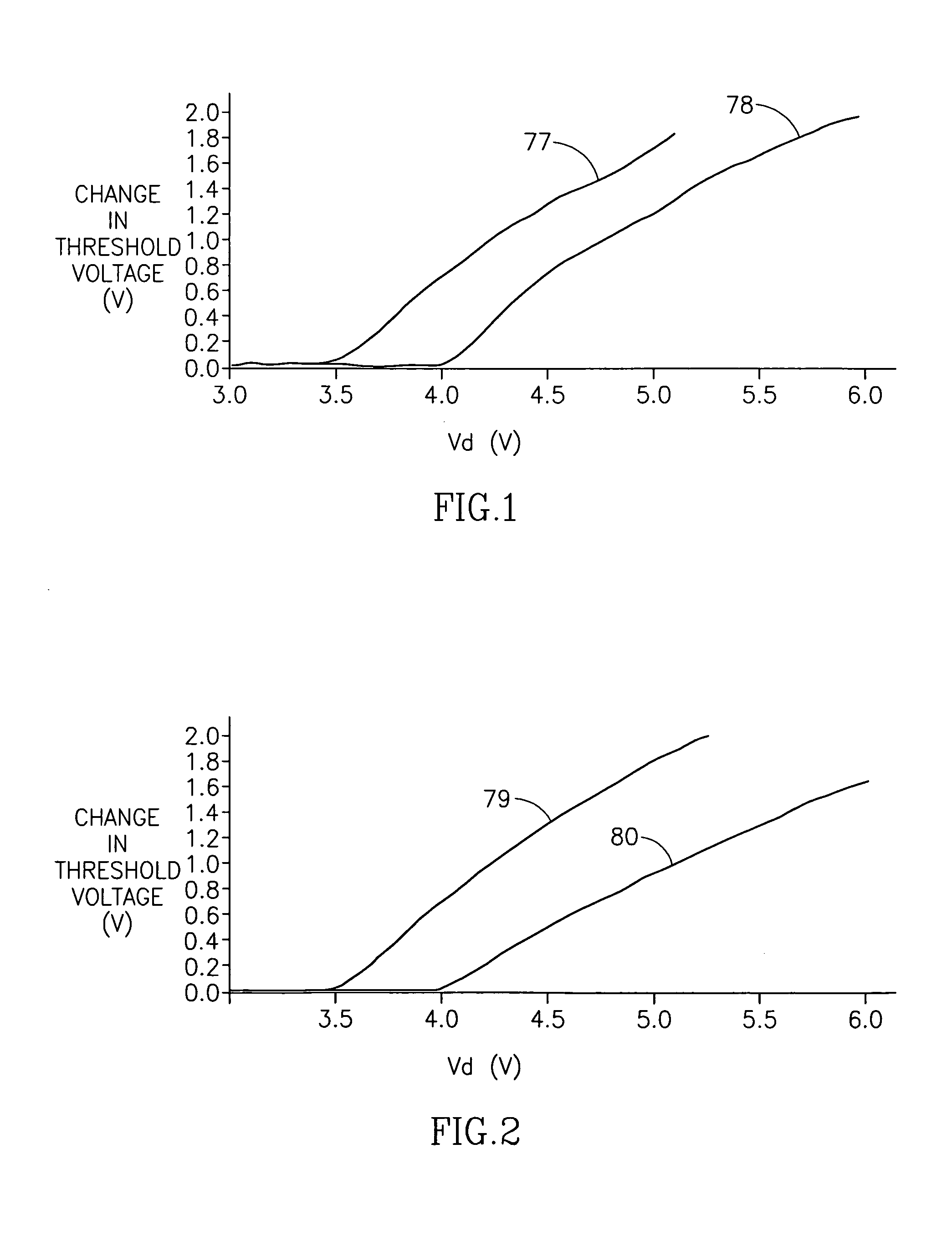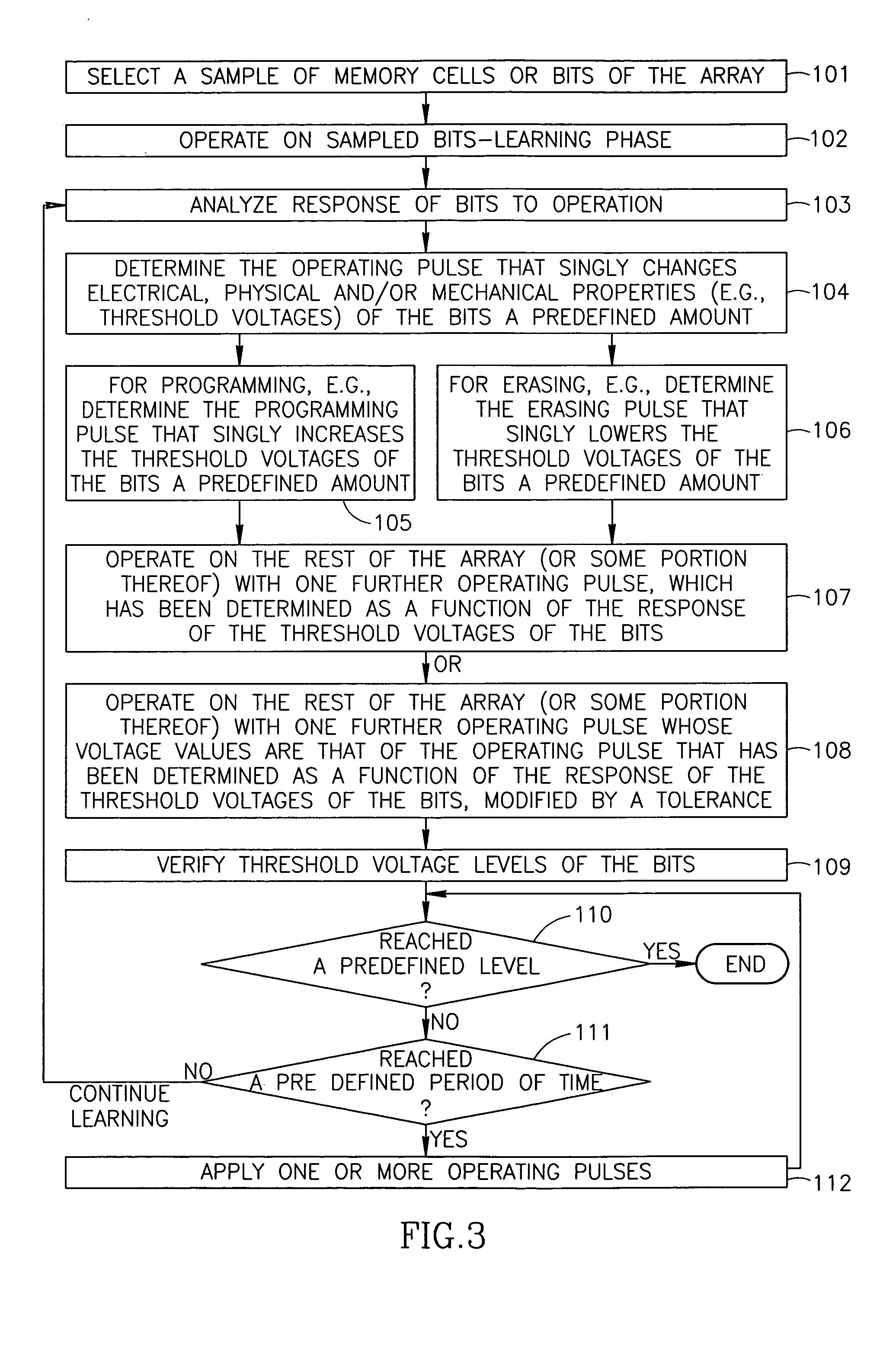Method for operating a memory device
a memory device and nonvolatile memory technology, applied in the direction of read-only memories, instruments, static storage, etc., can solve the problems of nrom arrays posing a problem for mass storage or code flash applications, preventing fast parallel programming rates,
- Summary
- Abstract
- Description
- Claims
- Application Information
AI Technical Summary
Benefits of technology
Problems solved by technology
Method used
Image
Examples
Embodiment Construction
[0041] Reference is now made to FIG. 3, which illustrates a method for operating bits of memory cells in a memory cell array, in accordance with an embodiment of the present invention. FIG. 3 is shown and described herein for programming the bits, but it is appreciated that the invention is not limited to the operation of programming, and the invention may be applied to other operations, such as but not limited to, erasing.
[0042] A set of memory cells or bits of the array may be selected (step 101). The set size may be any arbitrary size, such as but not limited to, 64 cells, for example. The bits in the set may then be programmed (step 102), such as by using a stepped programming algorithm. A suitable stepped programming algorithm is the one described in the Applicant's abovementioned copending U.S. patent application Ser. No. 09 / 730,586, entitled “Programming And Erasing Methods For An NROM Array”. The method comprises applying progressive pulses or steps of programming voltages ...
PUM
 Login to View More
Login to View More Abstract
Description
Claims
Application Information
 Login to View More
Login to View More - R&D
- Intellectual Property
- Life Sciences
- Materials
- Tech Scout
- Unparalleled Data Quality
- Higher Quality Content
- 60% Fewer Hallucinations
Browse by: Latest US Patents, China's latest patents, Technical Efficacy Thesaurus, Application Domain, Technology Topic, Popular Technical Reports.
© 2025 PatSnap. All rights reserved.Legal|Privacy policy|Modern Slavery Act Transparency Statement|Sitemap|About US| Contact US: help@patsnap.com



